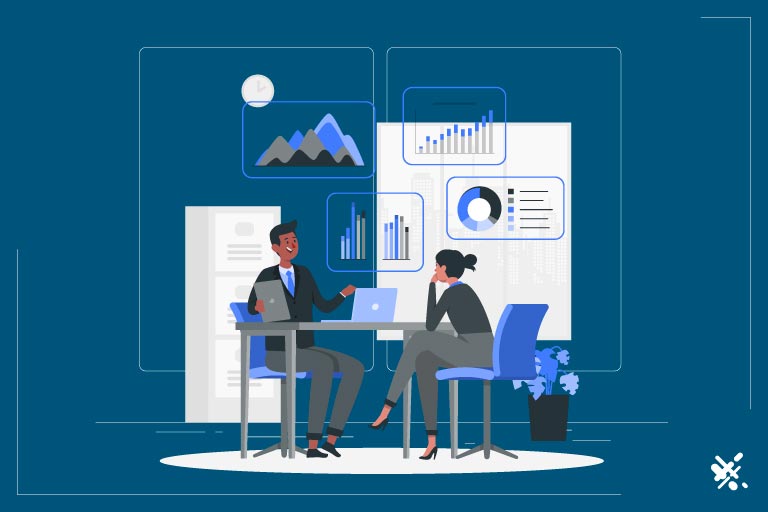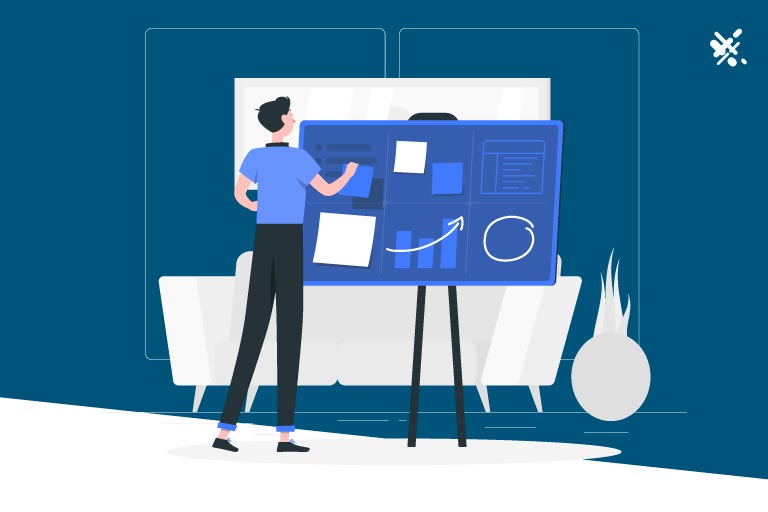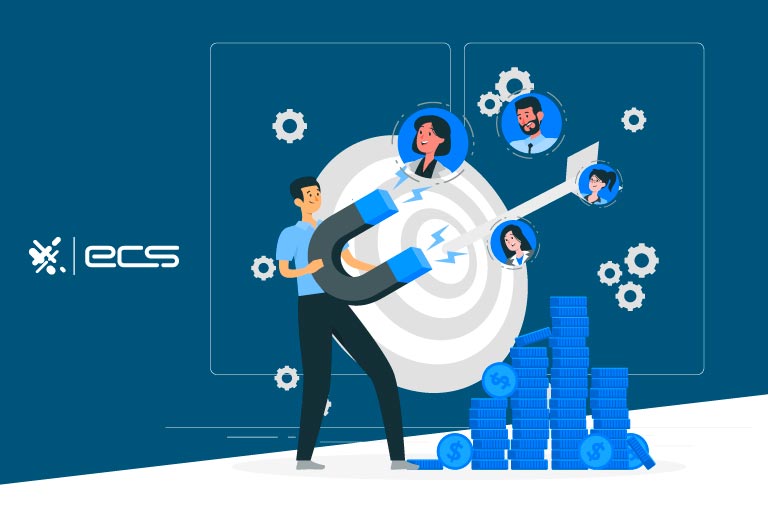A piece of wisdom we often hear when running a business is that customer retention always costs less than acquiring new customers. This was true before e-commerce and it still holds in the digital age.
While advertising on a worldwide scale has become affordable for even small businesses, acquiring new customers is still a costly proposition as competition drives up click rates on virtually all advertising platforms.
This is especially true as we head into uncertain economic headwinds where many companies are choosing to reduce their overall ad budgets. This means they need to then focus on customer retention to not lose sales with the cutback in advertising budgets.
We all know customer retention should be a focus, but sometimes we don’t always know exactly what that means or what to do. In this article, we’ll go over the key areas of customer retention along with some practical techniques you can apply to help retain your customers.
Customer Retention Definition And Overview
Customer retention is the practice of gaining maximum lifetime value from an existing customer through various techniques that encourage them to spend additional money beyond an initial transaction.
The underlying concept is that you already have this customer in your system and they have already shown interest in your brand which converts into sales. So, therefore, you should be able to encourage that customer to continue interacting with your brand. Assuming you provide the right incentives.
Why Prioritize Customer Retention?
The reason is simple acquiring new customers is expensive. Acquiring customers generally means you have some sort of marketing campaign that drives potential leads to your landing pages. You’ve spent money and time creating and tweaking those landing pages and designing marketing materials to help convert sales.
These are all an investment and they are meant to acquire new customers. But once you have a customer who converts into a sale, any additional sales are considered to be higher margin sales, as the initial cost of acquisition has already been paid.
This is why retaining customers and repeat business is less expensive than acquiring new customers. In fact, a study by Bain & Company showed that a modest 5% increase in customer retention yielded a 25% increase in profits.
Retained Customers Spend More
Not only does it cost less to retain customers instead of acquiring new ones, but those loyal customers also spend more per transaction. So not only would a merchant enjoy repeat business, but they also reap the benefits of higher transaction amounts with the gained customer trust in the brand’s products and services.
New customers are sometimes tentative to make larger purchases with an unproven brand. Repeat customers no longer have this fear and the transactions are then higher on average.
Opportunities For Upsells
New customers are often put off by additional buying suggestions. They can claim a business is trying to upsell them, looking for more money, rather than looking out for the best interest of the customer. However, repeat customers are more receptive to these offers due to the built-up trust.
Because repeat customers feel they have trust in the brand, suggestions made during checkout or the shopping process are taken more seriously. They are willing to try new things if they’ve already had a positive experience with your brand. For example, a customer who was happy with a cosmetic product from an e-commerce store will likely try other products (possibly in multiple shades) for future purchases.
Measuring Customer Retention
So we’ve already outlined how cost-effective it is to focus on customer retention to increase sales and profits. But we also need a way to measure customer retention so that we can see if a business is on the right track with its retention efforts.
Below are key metrics for evaluating customer retention that can apply to any business.
Repeat Customer Rate
This metric measures the percentage of customers that make a repeat purchase of any kind. This metric is easy to calculate and almost every e-commerce platform or shopping cart app will provide this metric for you.
Most e-commerce experts agree that a percentage between 20% and 30% is an ideal target for this metric. The closer you get to 30% is an indication you are doing very well. Anything 25% or higher and the business has a very high chance of long-term customer success.
If you’re at 20% or below, it means you should start to examine your retention strategies and look for problems.
To calculate this number manually, pick a period of time, for example, one year. Then take the total number of repeat customers in that period and divide it by the total number of new customers.
Then multiply that result by 100 to get the percentage.
Formula: (Repeat customers) / (new customers) X (100) = Percentage of repeat customers
So, if you had 200 repeat customers, and 700 new customers for the year at your e-commerce shop, your repeat customer rate would be 200/700= .28 x 100 = 28%. This type of metric would show that you’ve got a great repeat customer rate.
Purchase Frequency
On its own, this metric isn’t that valuable but it will be used in other calculations. To figure out this purchase frequency, select a period of time and then divide the total order placed by the number of unique customers.
Formula: (Total orders placed) / (Total unique customers) = Purchase frequency
Average Order Total
Another important metric is the average amount per order. This is something many different types of businesses track closely as it’s tied to overall revenue.
Once again, many platforms with analytics will calculate this number for you. However, to do it manually, simply divide the total revenue in a given period and divide it by the total orders in that same period.
Formula: (Total revenue) / (Total orders) = Average per order
Customer Lifetime Value
With this metric, we really start to get insights into how well a customer retention strategy is working over time. A strong retention strategy should see this metric rise over time.
This one is also easy to calculate as you take your previous metrics for purchase frequency and multiply it by the average order total. The result is your lifetime value average
Formula: (Purchase frequency) x (Average order amount) = Customer lifetime value
Customer Churn Rate
The churn rate in business simply means turnover. In this case, customer turnover. This shows how many of your customers essentially stopped being customers and had to be replaced by new customers.
This number needs to be calculated over a relevant period to make it a useful metric. So those with a lot of customers may choose months. But small businesses with fewer customers may need to use longer time frames as a reference.
To determine your churn rate, use the following steps:
Step 1. Subtract the total number of customers from the end of the time period from the total customers at the start of the time period.
Step 2. Divide that result by the number of customers at the beginning. Then multiply that result by 100 to get your percentage.
This metric also needs to be measured at different intervals to see if this number is increasing or decreasing. This is especially true if you are implementing changes that impact customer retention. You need to know if your strategy is working so you don’t waste resources.

Strategies To Increase Customer Retention
Now that we’ve gone over the key metrics that you can use to determine how well your business is retaining customers. It’s time to see what strategies you may or may not have in place that are creating these results.
If the numbers aren’t where you would like them to be, that means you need to implement certain strategies below to help improve your user retention.
Below are some of the tested methods many businesses use to help retain customers.
Make Reordering As Easy As Possible
This one seems obvious enough, but many e-commerce stores may not realize how outdated their customer account system is.
If customers have to reenter information each time they want to visit or are hit with other snags, they will be far less likely to click the checkout button.
Perform an audit of your customer account system and make sure it is as streamlined as possible so customers can order with one click.
Abandoned carts are a top reason for many lost sales in e-commerce. The top customer complaint and a common reason that customers are frustrated by a checkout process is when it becomes too tedious. This is especially true when shopping for non-essential items.
Use Clear Shipping Language
One thing that consistently kills repeat business is poor communication about shipping prices. Free shipping is best, but if your business model doesn’t allow it, then be upfront about shipping charges as early as possible in the checkout process.
Being upfront about shipping, rather than waiting until the end will create clear customer expectations that will facilitate complete checkout processes rather than abandoned carts.
Fast Shipping Times
Related to the shipping charges are shipping times. Customers are far more likely to repeat when they know their items ship fast. You may not be able to control how fast UPS or FedEx delivers a package, but you can control how fast you get it to them.
Try to strive for same-day shipping if orders are placed by a certain time and make sure to inform customers of this.
Customers buying on impulse will generally lose interest if shipping times are slow or not shown. After all, we are in an instant gratification-seeking generation. So if you can offer this, you are sure to convert prospects into clients.
Create A Loyalty Program
Loyalty programs are used by a vast majority of businesses including brick-and-mortar and e-commerce stores.
These loyalty programs have a proven track record of increasing customer retention and customer lifetime value. Using a point system that earns rewards toward future purchases is a way to add a gamification element to the shopping experience.
Be creative and match the loyalty rewards with the needs and wants of your customers. For example, a higher-end brand may see better results by offering exclusive perks to customers instead of just discounts. Creative perks could include free upgraded shipping at certain point levels or member-only items available to high-point earners only.
Reward New Customers
When you get a new customer it means your customer acquisition strategy is working. It also means you likely spent money to acquire that customer. Don’t let that go to waste and always reward new customers with some kind of incentive to shop again. This can be a discount or other perk on a second purchase.
But never miss the opportunity to turn a new customer into a repeat customer. These incentives can be sent via email, SMS, or even included in your packaging.
Regular Emails Or Newsletters
Make sure you take your email list of customers seriously and treat it like the valuable resource that it is.
Don’t send lazy emails with boring ad copy that lacks engagement. Target each email so that it serves a specific purpose and sells specific products or categories. The more you tailor these emails, the higher the response will be.
If your customer base is more responsive to product news or information, consider a newsletter. For example, a beauty supply company may send out a newsletter with cosmetic tips or information on the latest trends.
One helpful hint to add is to always take advantage of seasonal or holiday periods when sending out emails and newsletters. Many clients love seasonal specials or idea guides for the holidays year-round.
Easy Return Policy
Every industry is different when it comes to how returns are handled. But try to have one of the easiest return policies among your competitors.
Customers are much more likely to try new products if they feel they can return them easily. Even if they don’t plan on returning them, the knowledge of an easy return puts their mind at ease and increases impulse purchases.
However, you need to keep an eye on this as you don’t want your return policy to end up causing losses. Simply find a balance between an easy policy and one that’s as good or better than the competition.

Conduct Surveys
One of the easiest ways to find out what your customers are thinking is to simply ask them. The easiest way to collect and analyze consumer feedback data is through a survey. You can conduct this via social media platforms, email, or generate an automatic prompt after checkout. If participation is low, you can offer an incentive for those customers who fill out the survey.
In e-commerce, merchants are often removed from our customers compared to traditional brick-and-mortar stores. However, e-commerce merchants can gain extra insight beyond metrics by conducting surveys to ask about certain buying habits, what makes customers choose certain items, product feedback, etc.
When doing this, remember to have an open mind. If you are an entrepreneur, you’ve probably put your blood, sweat, tears, and plenty of money into your business. So it can sometimes be hard to hear negative feedback. But an open mind can help your business grow, far beyond the temporary ego bruise. If customers repeatedly bring up the same issue in surveys, it means that it needs to be addressed, even if you don’t personally feel there is a problem with it.
Customer Retention Case Study
A perfect real-world example of how these strategies can pay off is by looking at Lingopie, a language learning platform that works on a subscription basis. They have a customer retention percentage of over 70% after 4 months according to a report in Forbes Magazine.
Lignopie achieved this incredible customer retention rate by using many of the same customer service strategies we’ve outlined here. Just adapted to their business.
Continually Collect Data
One thing Lingopie does is use varied data sets and constantly monitor metrics like the ones we outlined earlier. By doing this, they can spot trends quickly and either act on them or remedy the situation if there is a problem.
Their main takeaway is that customer retention is not a static metric and you have to be monitoring it as a moving target.
Always Offer Value
By listening to customer feedback, Lingopie strives to always add value for its customers. They state it can be small things and at times may even seem inconsequential. But by constantly offering customers increased value by responding to feedback, they have increased customer retention.
Customer Loyalty
We mentioned how important customer surveys can be and Lingopie has leveraged this to the fullest. By using customer satisfaction surveys throughout their system they can collect feedback and make improvements.
This means that instead of just asking about general customer satisfaction, try to be more granular and ask about specific interactions or areas of the buying process. Customers may be satisfied overall, but there may be smaller issues they would like to see addressed. These smaller areas are often easy and cheap to fix and can go a long way to improving customer loyalty in the long run.
Another thing they do is monitor customer support requests to spot trends or recurring issues that need to be fixed to improve customer experience. This means you should consider a tracking system for your customer support requests.
This way, if one area sees a high percentage of requests, you may need to address that issue.
For example, if a large percentage of your support requests are about shipping times, it will tell you that it’s an area that could improve.

Final Thoughts On Customer Retention
If you run a business then you already know how important it is to achieve a maximum ROI on money invested into your business.
If you spend money on technology or automation to improve your business, you want to maximize the ROI on that money spent.
Acquiring customers is no different and looking at those customers as an investment helps to put things into perspective. By using the custom retention strategies and metrics outlined in this article, you can maximize your ROI on money spent acquiring new customers.
And down the road, you may be able to spend less on acquiring new customers and rely on word-of-mouth referrals from your loyal customer base.
To contact sales, click HERE. And to learn more about ECS Payment Processing visit Credit & Debit.
